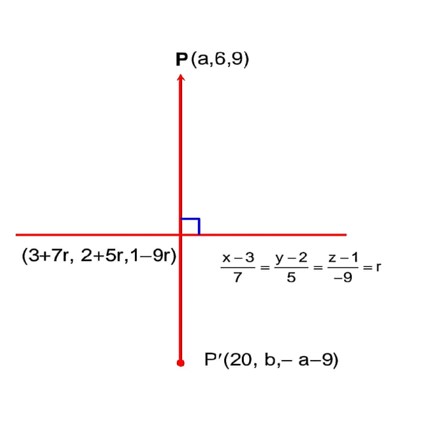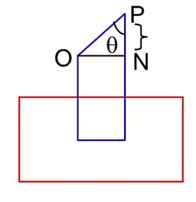Three Dimensional Geometry
Get insights from 212 questions on Three Dimensional Geometry, answered by students, alumni, and experts. You may also ask and answer any question you like about Three Dimensional Geometry
Follow Ask QuestionQuestions
Discussions
Active Users
Followers
New answer posted
3 months agoContributor-Level 10
ai+aj+ck, i+k and ci+cj+bk are co-planar,
|a c; 1 0 1; c b| = 0
a (0-c) - a (b-c) + c (c-0) = 0
-ac - ab + AC + c² = 0
c² = ab
c = √ab
New answer posted
3 months agoContributor-Level 10
Now equation of line OA be
direction cosines of plane are 4, -5, 2
Equation of any point on OA be
Since O lies on given plane so
So, O (9/5,2,27/5). Hence by mid-point formula
B
New answer posted
3 months agoContributor-Level 10
P2 : x – 3y – z = 5
P3 : 2x + 10y + 14z = 5
Ratio of the direction cosines of P1 and P2
Hence, P1 and P3 are parallel.
New question posted
3 months agoNew answer posted
3 months agoContributor-Level 10
Point of intersection is P (2, 3, 2)
Point Q on is (3 + 2s, 3 + 2s, 2 + s).
New answer posted
3 months agoContributor-Level 10
a + 20 = 6 + 14r . (i)
b = -2 + 10r . (ii)
a = 18r – 2 . (iii)
Solving (i) and (iii) we get
20 + 18r – 2 = 6 + 14r
r = -3

New answer posted
3 months agoContributor-Level 10
Normal vector to the plane
Projection of
PN =
Projection of OP on plane = ON =
Taking an Exam? Selecting a College?
Get authentic answers from experts, students and alumni that you won't find anywhere else
Sign Up on ShikshaOn Shiksha, get access to
- 65k Colleges
- 1.2k Exams
- 679k Reviews
- 1800k Answers

